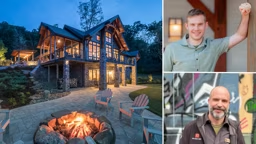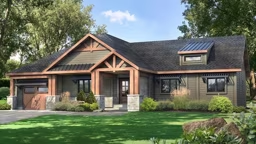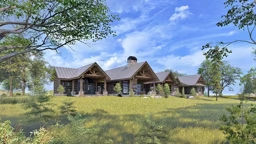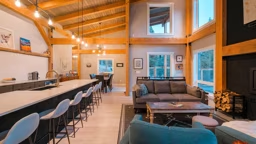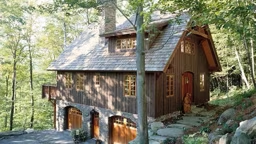
Photo: Eric Rothermel / Unsplash
Timber frame kits remain a favorite construction method for building long-lasting, naturally beautiful homes. Each with its own unique style, these adaptable and versatile homes offer endless possibilities. And though the design choices are nearly unlimited, the process is fairly straightforward. Here's how a timber frame home kit comes to be, from start to finish.
Step One: Find a Piece of Land
Before you can start to design a timber frame home, you need to find the piece of land which you’ll build your home on. While there are many stock floor plans that are appropriate for a variety of landscapes, designing your home for your specific lot will allow you to make the most of any natural gradients, trees, shelter and sun direction. Make sure that the parcel of land does not have any restrictions and that you’ll be able to get all the permits that allow you to build. This phase can last anywhere from a month up to year depending on how particular you are about the piece of land you buy.Step Two: The Design Phase
There are plenty of companies to help you to design your timber frame home. Choose a reputable company with plenty of experience. Many of them have in-house architects or designs to guide you to the perfect home, whether that involves designing a home from scratch or adapting an existing floor plan to your own needs. Make sure you take your time on this step to ensure your design is just right for your family. It's better to spend an extra couple of weeks in the design phase rather than having to spend a couple of months changing something midway through the build. This phase can last anywhere from a week to a couple of months depending on customizations.Step Three: Groundwork
Once the timber-framed home has been designed, you’ll know exactly how large the foundations need to be and can begin that process. The company you are working with for the kit will provide the specifications for the foundation type and size. There are several types of foundations: poured concrete, concrete block, pre-cast wall, concrete slab and pier. Factors like site characteristics, climate, soil type and house design will determine which is best for your home. This phase can last anywhere from two to four weeks.
Step Four: Manufacturing the Kit
This step will most likely take place alongside the foundations being constructed. The company you have chosen will manufacture your kit in their factories and prepare it for delivery to your site. This phase can last anywhere from a couple of weeks to a couple of months depending on the size and materials you’ve chosen for your timber-framed home.Step Five: Constructing the Kit
It depends on the company and package you select, but many timber framers will cut the frame, deliver it to your site and raise it. Others will hand the project off to a contractor. The wooden frame will be raised first and then the materials you’ve chosen for your external walls will follow. You can expect this phase to last a couple of weeks if the company is building the shell for you, or longer if you’re doing/managing the construction yourself.
Step Six: Finishing the Timber Frame Home
Once the shell has been completed, it’s time to install all the plumbing and electrical components and begin turning a house into a home. This is usually one of the longer phases of the build, as there is so much that needs to be done, from skimming and plastering the inside walls to decorating and furnishing. This phase can last anywhere upwards of a couple of months.
Author Bio: Semi-retired lecturer and author David Woods has worked with wood for more than 30 years, building everything from simple furniture to four-bedroom homes. He now shares his experience on his website Log Cabin Hub, where he teaches people to build their own long-lasting log homes.





